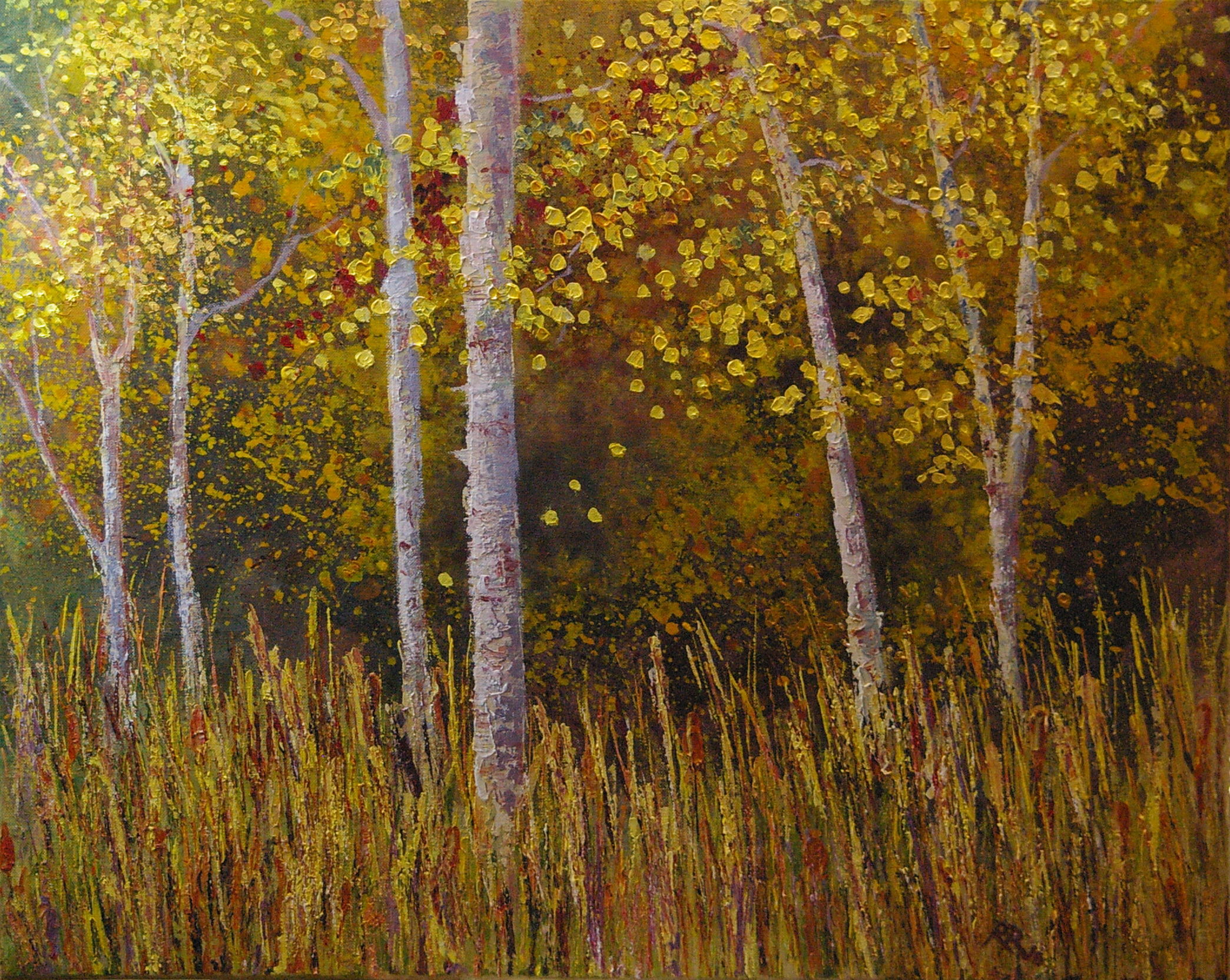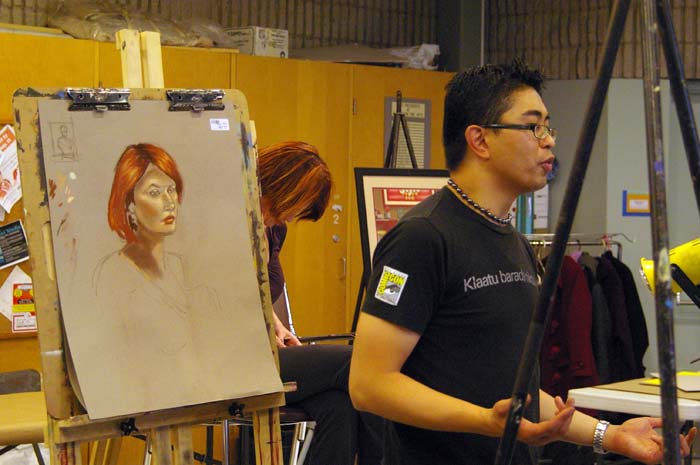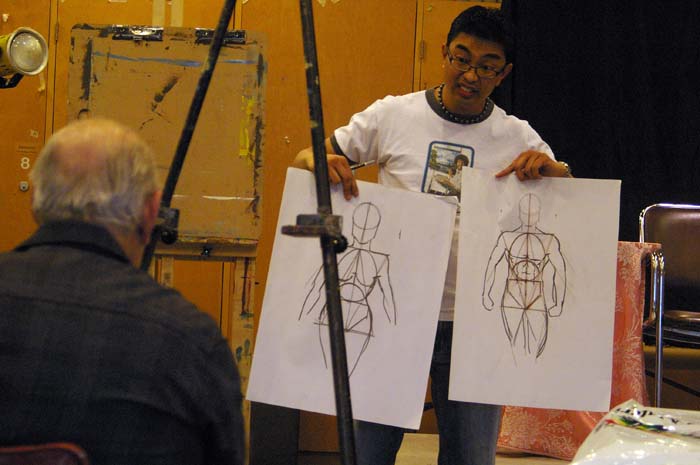Recently I've purchased a number of excellent videos through North Light, including three of pastelist Richard McKinley. His two recent ones are excellent, but the one I want to mention here is an older one entitled "A Studio Session with Richard McKinley." In this 3 hour, 2 disk DVD, Richard is shown completing an entire painting from concept to final touches, and along the way he explains a myriad of critical concepts including simultaneous contrast. The painting Richard completes in this session makes use of a thin oil wash underpainting, and I really like the resulting serendipitous splatters, runs, and textures. This week I was reviewing older photographs for inspiration, and came across a photo that featured a narrow trail between rough low bush, spattered with snow. The textures reminded me of those on Richard's oil underpainting, so I thought I'd give the technique a try.
Richard emphasizes that the underpainting is simply a set-up for the pastel, and encourages you to paint dark where you plan to add light pastel, light where you want to add dark pastel , warm under cool, and cool under warm. It's almost like painting a "negative" underneath the planned finished painting--which takes some thinking and planning, let me tell you!
Here is the resulting underpainting, using VERY thin oil washes (thinned with Turpenoid) on white Dianne Townsend sanded paper. I didn't stretch the paper first, but it didn't buckle or warp with the washes, and they dried within about 30 minutes. In the foreground, I dabbed additional Turpenoid onto the washes shortly after applying them, as I wanted additional runs and textures to appear. The paper was set upright on the easel to enable gravity to affect the paint runs.

Once the underpainting was thoroughly dry, I began to gently and slowly apply pastel, trying to respond to the existing textures and add only enough strokes to bring my concept into focus. In the final painting, much of the evergreen trees and distant bush/treeline is still the oil underpainting. The foreground has been made more textured with the addition of thin lines of pastel (made by repeatedly tapping the crisp edge of square Terry Ludwig pastels across the surface, which gives a more natural effect than "drawing" the lines). The snowy path has the most opaque application of pastel, particularly at the distant focal point, where I wanted the effect of warm sunlight on dense snow. On the left, near the big trees, the snow effect is made by simply dragging a medium blue pastel on its side across the underpainting, allowing some texture below to show through to suggest a thin layer of snow over scruffy underbrush. You'll note that I discarded the idea of the leafless tree silhouette against the skyline, simply covering it over with the pastel I used in the sky. I think the pale blue pastel over the warm gold underpainting gives a nice glow.

I enjoyed using this technique, and will definitely try it again soon.
























































